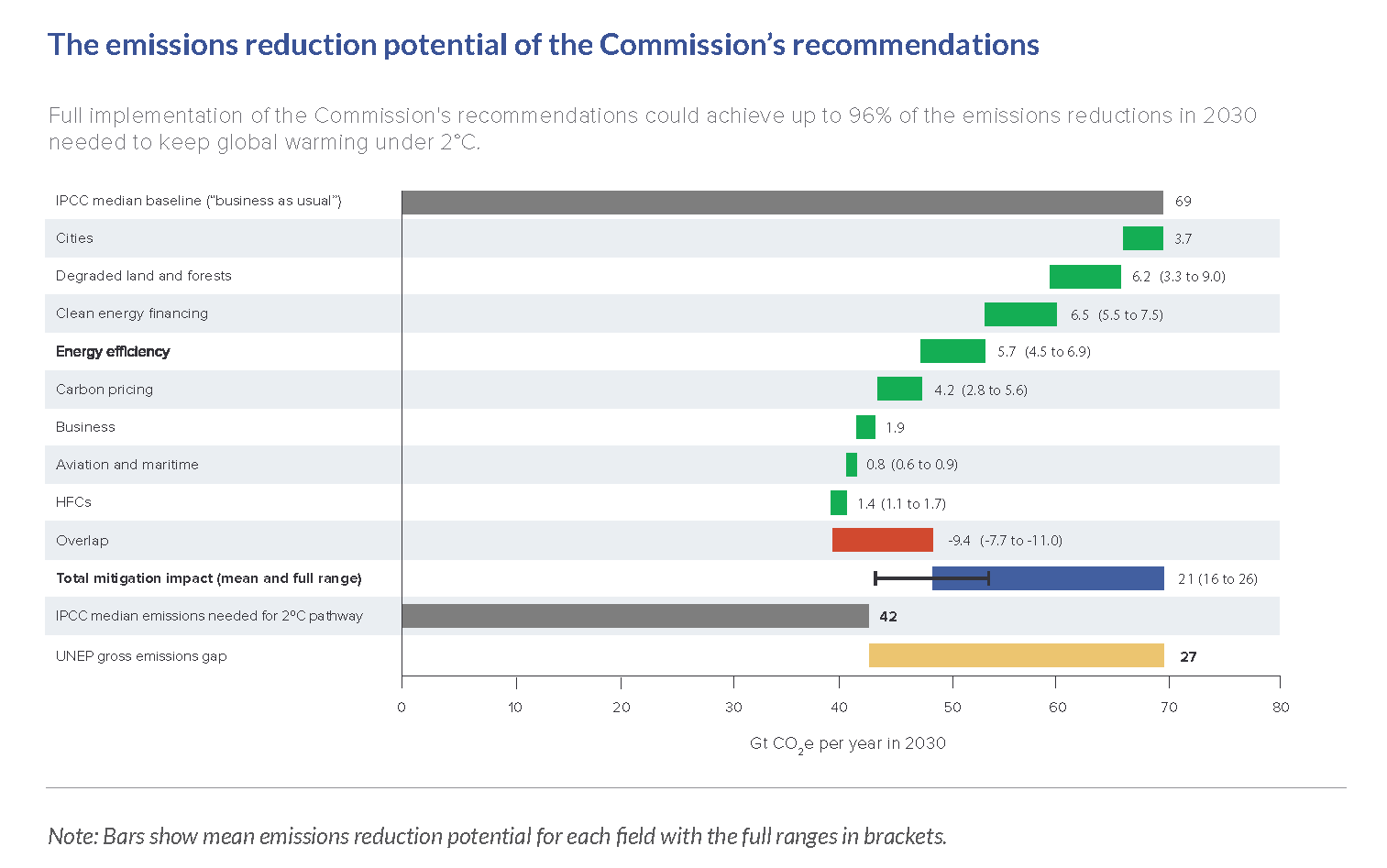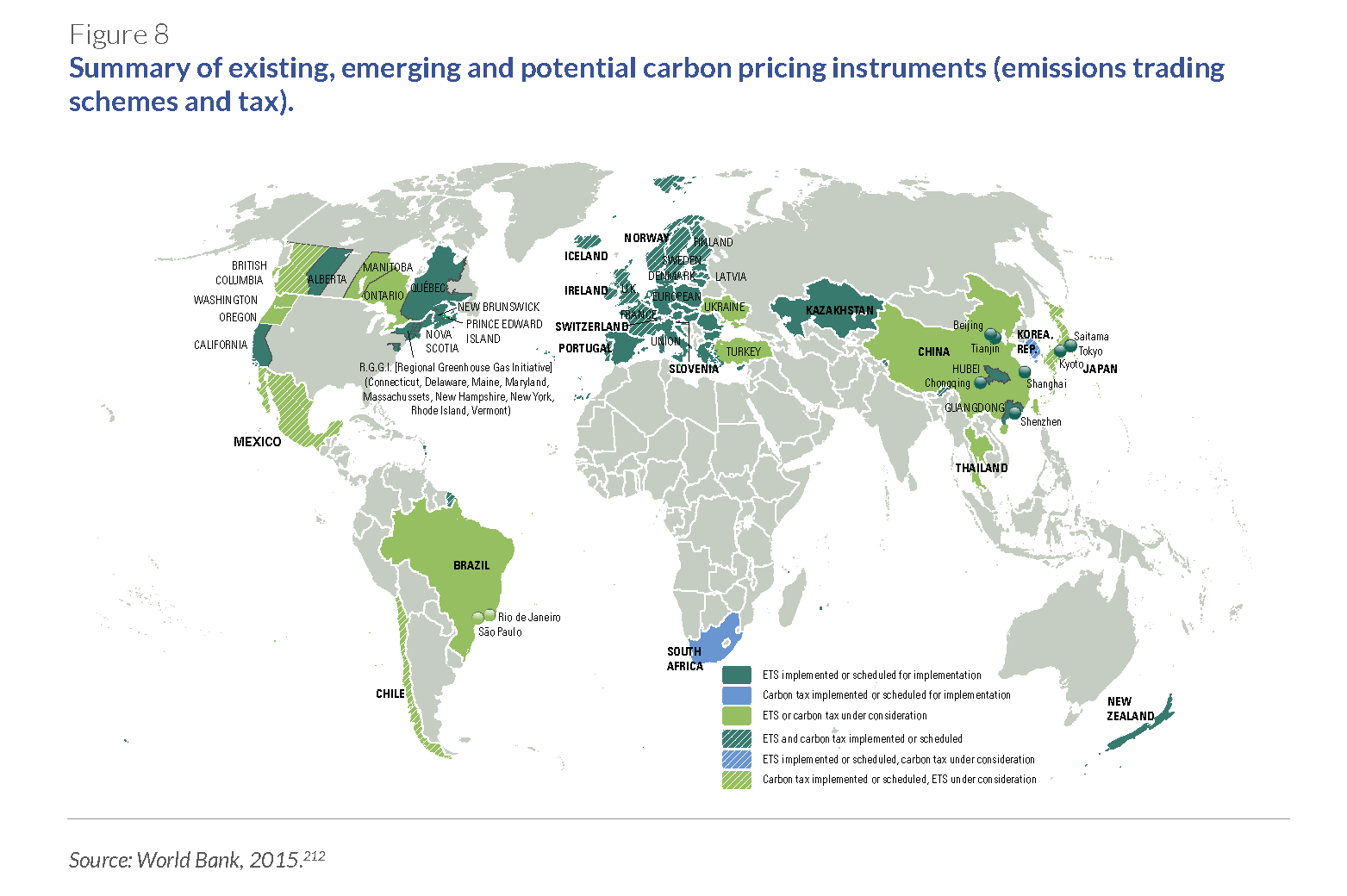A new report from the Global Commission on the Economy and the Climate makes 10 recommendations that could result in up to 96% of the emissions mitigation needed to limit global warming to 2°C.
“A goal we once thought of as distant is within our reach,” said former Mexican President Felipe Calderón, chair of the commission.
The report, “Seizing the Global Opportunity: Partnerships for Better Growth and a Better Climate,” focuses on three systems where both economic growth and greenhouse gas emissions are concentrated: cities, land use, and energy. The analysis also emphasizes three main drivers of growth: resource efficiency, infrastructure investment, and innovation. Besides stressing actions by businesses and investors, the report highlights the importance of international cooperation for tackling heat-trapping hydrofluorcarbons and limiting emissions from aviation and shipping.
The New Climate Economy report estimates that the 10 recommendations below “could achieve at least 59% and potentially as much as 96% of the emissions reductions needed by 2030 to keep global warming under 2°C.”
- Accelerate low-carbon development in the world’s cities
- Restore and protect agricultural and forest landscapes, and increase agricultural productivity
- Invest at least $1 trillion a year in clean energy
- Raise energy efficiency standards to the global best
- Implement effective carbon pricing
- Ensure new infrastructure is climate-smart
- Galvanize low-carbon innovation
- Drive low-carbon growth through business and investor action
- Raise ambition to reduce international aviation and maritime emissions
- Phase down the use of hydrofluorocarbons
The figure below from the report summarizes the expected emission mitigation associated with each strategy.

The need for global decarbonization becomes increasingly apparent with each passing year. Air pollution caused by fossil fuel combustion is killing millions of people. The build-up of greenhouse gases in the Earth’s atmosphere is increasing the planet’s average temperature, disrupting natural cycles and weather patterns. Higher temperatures are melting Arctic ice and causing sea level rise, threatening coastal communities and island nations. Droughts, heatwaves, and wildfires have increased in frequency and intensity, resulting in significant economic losses. To avoid further costs and damages, we must find ways to run and grow our economies using low-carbon options.
The report cites a number of positive developments in energy and climate that are building momentum toward a low-carbon future:
- Renewable energy costs are plummeting, while energy storage and demand management technologies are taking off
- In just the past two years, 28 countries have launched efforts to reform fossil fuel subsidies
- Some 175 governments, companies, NGOs, and other organizations have committed to halve deforestation by 2030
- Carbon pricing has been adopted or planned in about 40 countries and more than 20 sub-national jurisdictions, as shown in the graphic below

Economist Lord Nicholas Stern, co-chair of the commission, summed up the trends by stating, “strong economic growth that is also low-carbon is going to be the new normal.” But major challenges remain. To limit warming to 2°C, the carbon intensity of the global economy (emissions per dollar of GDP) must decline an average of nearly 5% per year, more than triple the current annual rate of 1.5%.
The New Climate Economy was commissioned in 2013 by the governments of seven countries: Colombia, Ethiopia, Indonesia, Norway, South Korea, Sweden, and the United Kingdom. It is the flagship project of The Global Commission on the Economy and Climate, a partnership of eight research institutes: World Resources Institute, Climate Policy Initiative, Ethiopian Development Research Institute, Global Green Growth Institute, Indian Council for Research on International Economic Relations, Overseas Development Institute, Stockholm Environment Institute, and Tsinghua University.
